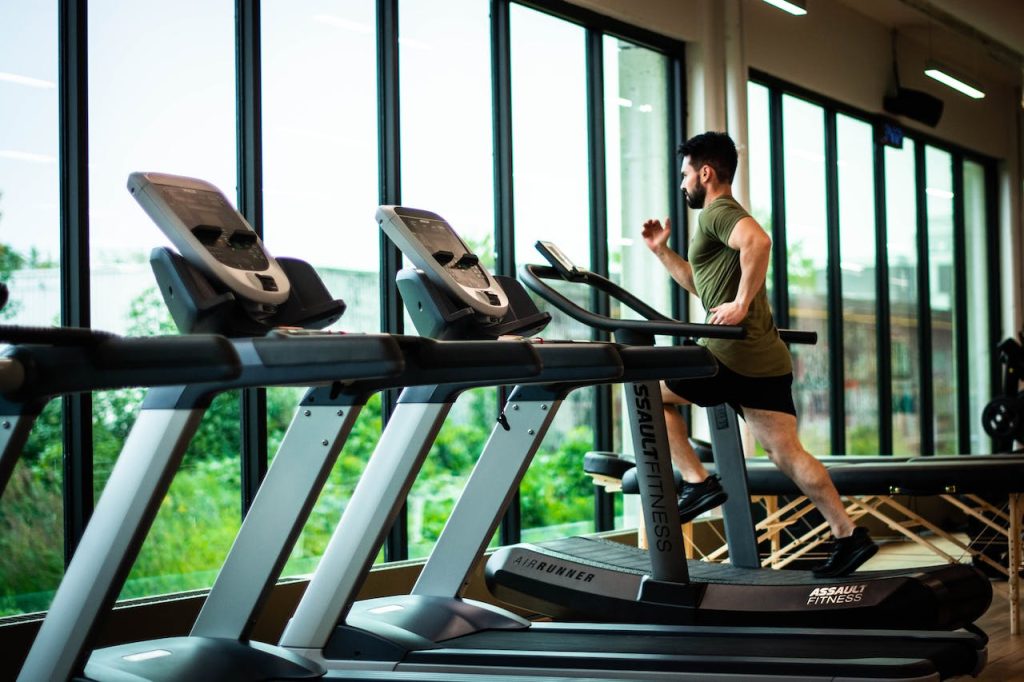Geschatte leestijd: 3 minuten
The Treadmill: A Comprehensive Guide
In recent years, running has been gaining popularity once again. You can practice this sport outdoors or indoors on a treadmill. Whether you dislike outdoor running or find it more comfortable to exercise in a gym, with the treadmill, you can simulate running. According to a study published in Sports and Exercise, running burns the most calories of all cardio exercises. And did you know that this machine wasn’t originally built for humans?
The Treadmill
The very first treadmill dates back to 1875 and was built for horses. At that time, people worked with very large mills, and by placing horses on a treadmill, they could assist with these mills. Much later, in 1952, a professor at the University of Washington, Robert A. Bruce, realized that the treadmill might not only be interesting for horses but also for humans.
The treadmill simulates running outdoors. Like almost all cardio machines, you can also set various programs and determine the intensity on the treadmill. You determine the intensity by tilting the treadmill a few degrees, making it harder to move forward.
Running on the Treadmill
As with any training, when running on the treadmill, you should also do a proper warm-up. Start slowly for the first 5 minutes, allowing your muscles and central nervous system to adapt to the effort. Depending on your preferences, you can then increase the intensity by running faster or tilting the treadmill, or you can follow a pre-developed training program. Make sure to choose a different program every 4 weeks, as your body can quickly adapt to these programs.
If you’ve just started running, it’s advisable to do this twice a week. Do this with at least 2 days of rest between training days. If you’ve made it through the first 2 weeks without any pain or issues, you can increase the intensity. Start increasing the intensity, in the form of pace, by 10% every other week. In between these weeks, extend the length of your training by 2 minutes.
Difference between Treadmill Running and Outdoor Running
In addition to a varied environment, running on a treadmill differs from outdoor running in several ways. For both, it can be taxing on your muscles, tendons, and knees, with the treadmill being slightly milder due to better cushioning. But don’t overdo it right away and let your body get used to the treadmill.
Whether there’s a difference between indoor and outdoor sports was recently published in a study.
Furthermore, it’s not mandatory to wear running shoes on a treadmill, but it’s recommended. When looking at the cushioning of the treadmill, it’s often slightly less taxing than running on asphalt or other surfaces you encounter outside. However, often this cushioning isn’t sufficient. Besides, at some point, you’ll want to venture outside, so it’s useful if your running shoes have already been worn in.
Advantages of the Treadmill
- • Less strain on your knees, muscles, and tendons due to better cushioning
- • No headwind or other obstacles
- • Relatively straightforward in terms of pace and program
- • Often cooler because you’re not exposed to the sun, and most treadmills have built-in cooling
- • It doesn’t rain in the gym
- • You can also train at home on a treadmill, in front of the TV
Disadvantages of the Treadmill
- • Less varied environment compared to outdoor running
- • Quite boring and monotonous
- • Technique on a treadmill is often different from outdoor training
- • Less intense than outdoor training
- • You can’t go running with others on a treadmill
Interval Training on the Treadmill
A common complaint about the treadmill in the gym is that it can be boring. You can break this monotony by turning it into an interval training. During an interval, you can train for shorter, more intense periods. For example, with a sprint interval:
Start with a warm-up and then run for 5 minutes, alternating with 1 minute of sprinting. Do this for a period of 15 minutes to half an hour. As your fitness improves, you can reduce the running lengths from 5 minutes to, for example, 3 minutes.
Another variation you can make is by varying the incline. Here too, start with a short warm-up and run for 5 minutes at your own pace. Then increase the incline and run with the increased incline for 5 minutes. Alternate this until you’ve done it for 20 minutes or 30 minutes.</p >
You can also combine the first and second interval trainings. So, sprint first and then do an incline interval.

